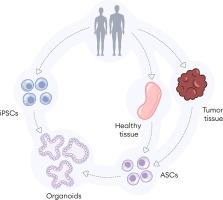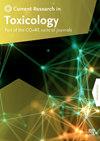iPSC-derived and Patient-Derived Organoids: Applications and challenges in scalability and reproducibility as pre-clinical models
IF 2.9
Q2 TOXICOLOGY
引用次数: 0
Abstract
Recent advancements in stem cell technology have led to the development of organoids – three-dimensional (3D) cell cultures that closely mimic the structural and functional characteristics of human organs. These organoids represent a significant improvement over traditional two-dimensional (2D) cell cultures by preserving native tissue architecture and cellular interactions critical for physiological relevance.
This review provides a comprehensive comparison between two main types of organoids: induced Pluripotent Stem Cell (iPSC)-derived and Adult Stem Cell (ASC)-derived (also known as Patient-Derived Organoids, PDOs). iPSC-derived organoids, derived from reprogrammed cells, exhibit remarkable plasticity, and can model a wide range of tissues and developmental stages. They are particularly valuable for studying early human development, genetic disorders, and complex diseases. However, challenges such as prolonged differentiation protocols and variability in maturation levels remain significant hurdles. In contrast, ASC-derived organoids, generated directly from patient tissues, faithfully recapitulate tissue-specific characteristics and disease phenotypes. This fidelity makes them indispensable for personalized medicine applications, including drug screening, disease modeling, and understanding individualized treatment responses.
The review highlights the unique advantages and limitations of each organoid type, emphasizing their roles in advancing biomedical research and drug discovery. It addresses key challenges in organoid technology, such as scalability, reproducibility, and the need for standardized culture protocols. Furthermore, it explores recent innovations in scaffold-guided organoid engineering and the integration of organoids with advanced technologies like artificial intelligence and high-throughput screening.
The integration of organoids with cutting-edge technologies holds promise for enhancing their utility in modeling complex human diseases and accelerating drug discovery and development. By providing more physiologically relevant models of human organs, organoid technology is poised to revolutionize biomedical research, offering new insights into disease mechanisms and personalized therapeutic strategies.

iPSC 衍生和患者衍生有机体:临床前模型在可扩展性和可重复性方面的应用和挑战
干细胞技术的最新进展促成了器官组织(organoids)的发展--三维(3D)细胞培养物可近似模拟人体器官的结构和功能特征。与传统的二维(2D)细胞培养物相比,这些器官体保留了对生理相关性至关重要的原生组织结构和细胞相互作用,是一项重大改进。本综述全面比较了两种主要类型的类器官:诱导多能干细胞(iPSC)衍生的类器官和成体干细胞(ASC)衍生的类器官(也称为 "患者衍生类器官",PDOs)。iPSC衍生的类器官来自重编程细胞,具有显著的可塑性,可模拟多种组织和发育阶段。它们对于研究人类早期发育、遗传性疾病和复杂疾病特别有价值。然而,长期分化方案和成熟水平的可变性等挑战仍然是重大障碍。相比之下,直接从患者组织中生成的ASC衍生类器官组织能忠实再现组织特异性特征和疾病表型。该综述突出了每种类器官的独特优势和局限性,强调了它们在推动生物医学研究和药物发现方面的作用。综述强调了每种类器官的独特优势和局限性,强调了它们在推动生物医学研究和药物发现方面的作用。综述探讨了类器官技术面临的主要挑战,如可扩展性、可重复性以及对标准化培养方案的需求。此外,它还探讨了支架引导的类器官工程学以及类器官与人工智能和高通量筛选等先进技术的整合方面的最新创新。通过提供更多生理相关的人体器官模型,类器官技术有望彻底改变生物医学研究,为疾病机制和个性化治疗策略提供新的见解。
本文章由计算机程序翻译,如有差异,请以英文原文为准。
求助全文
约1分钟内获得全文
求助全文
来源期刊

Current Research in Toxicology
Environmental Science-Health, Toxicology and Mutagenesis
CiteScore
4.70
自引率
3.00%
发文量
33
审稿时长
82 days
 求助内容:
求助内容: 应助结果提醒方式:
应助结果提醒方式:


